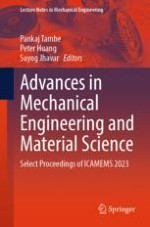2024 | OriginalPaper | Buchkapitel
Finite Element Simulation of Tunnel Defect in Friction Stir Welding of Pure Copper: Effect of Tool Geometry
verfasst von : Debtanay Das, Swarup Bag, Sukhomay Pal
Erschienen in: Advances in Mechanical Engineering and Material Science
Verlag: Springer Nature Singapore
Aktivieren Sie unsere intelligente Suche, um passende Fachinhalte oder Patente zu finden.
Wählen Sie Textabschnitte aus um mit Künstlicher Intelligenz passenden Patente zu finden. powered by
Markieren Sie Textabschnitte, um KI-gestützt weitere passende Inhalte zu finden. powered by
